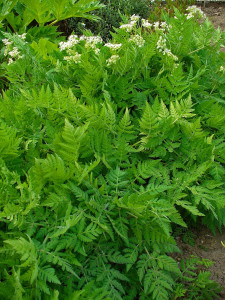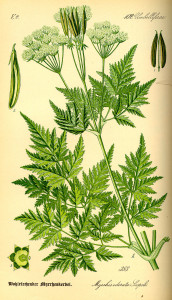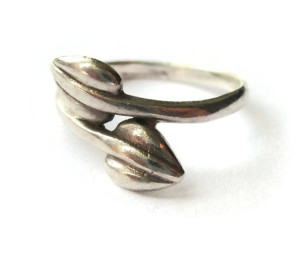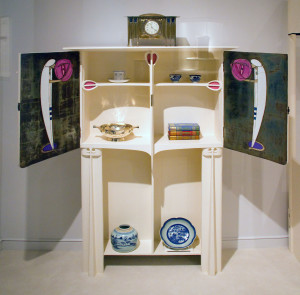I have quite a few pieces of silver jewellery in my Etsy shop that are inspired by British Arts and Crafts designs, most notably those of Charles Rennie Mackintosh. One of the motifs he and his contemporaries used quite a lot is known as the cicely leaf design – though I often see it written as cecily leaf.
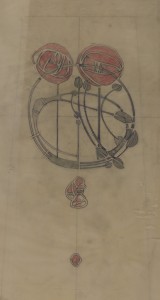
Charles Rennie Mackintosh design, 1902. It features two Glasgow Roses and several cicely leaves. From the collection of the Hunterian Museum.
Sweet cicely (Myrrhis odorata) is a member of the umbellifer family, similar to cow parsley, Queen Anne’s lace, fennel and wild carrot.
The problem is, the fern-like, divided pinnate leaf of sweet cicely looks nothing like the leaf described as the cicely (or cecily) leaf, with its broad heart-shaped or teardrop-shaped leaf and prominent central rib! I have no idea where the name of the motif came from, but it is in very common use. Maybe it is correctly spelled cecily, and was called after a lady of that name … I’ve had a good old truffle online and I’m none the wiser.
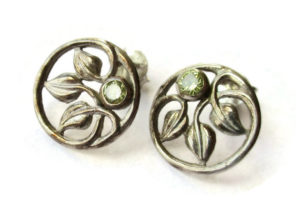
Vintage cicely leaf sterling silver and peridot glass stud earrings. For sale in my Etsy shop: click on photo for details.
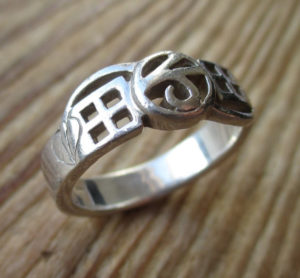
Charles Rennie Mackintosh style sterling silver ring with cicely leaf design. For sale in my Etsy shop: click on photos for details. (NOW SOLD).
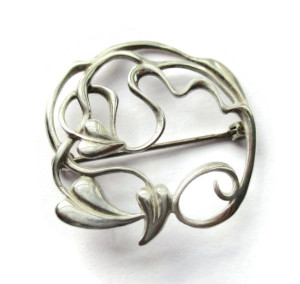
Vintage Ortak brooch with three cicely leaves. For sale in my Etsy shop: click on photo for details. (NOW SOLD).
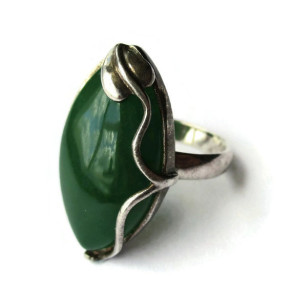
Vintage jadeite and sterling silver ring with cicely leaf design. For sale in my Etsy shop: click on photo for details. (NOW SOLD).
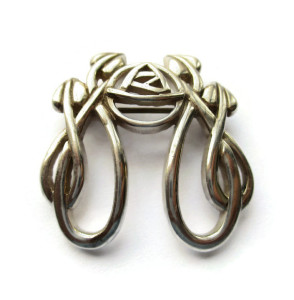
Charles Rennie Mackintosh style vintage brooch with Glasgow Rose and cicely leaves. For sale in my Etsy shop: click on photo for details. (NOW SOLD).
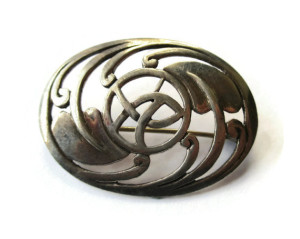
Vintage Charles Rennie Mackintosh style brooch with Glasgow Rose and cicely leaves. For sale in my Etsy shop: click on photo for details.
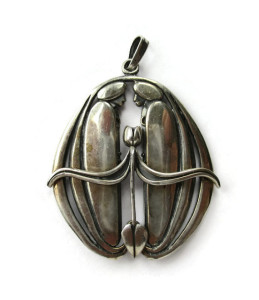
Vintage Charles Rennie Mackintosh design pendant with figures and cicely leaf. For sale in my Etsy shop: click on photo for details. (NOW SOLD).
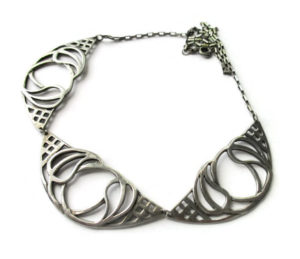
Charles Rennie Mackintosh style necklace with cecily leaves. Made in sterling silver by Carrick Jewellery and hallmarked Edinburgh 1988. For sale: click on photos for details. (NOW SOLD).
But whatever the origins of the motif and its various names, it’s a lovely one that was commonly used.
